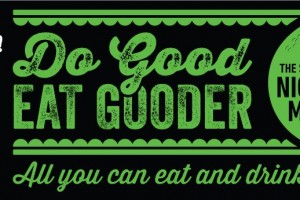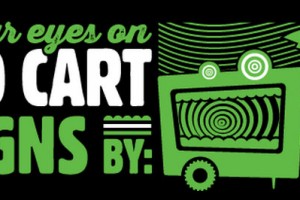The Stop’s Night Market is an annual fundraiser that draws crowds of citizens and creatives alike for a night of food, art and music. Each year, young designers from Toronto create and construct fabulous food carts for a local restaurant they are paired with. Unique and innovative kiosks stand side-by-side to present new and delicious dishes. As always, Waterloo Architecture was well represented this year – students and alumni contributed their time and creative energy to 10 of the over 40 carts and installations constructed. But, what goes on behind the scenes and in the minds of the creatives involved in The Stop’s Night Market? BRIDGE has reached out to four design teams to gain insight into their concept, collaboration and construction process; read on to know more.
The Stop’s Night Market 2015
co.Labs
Design Team:
Mark Zupan (M.Arch 2014)
Geoff Christou (M.Arch 2013)
Sonja Storey-Fleming (M.Arch 2014)
Emad Ghattas (M.Arch 2013)
Henry Murdock M.Arch 2014)
Design Description:
The Stop’s Night Market expanded its scope this summer to help better communicate its mission. The organization is rooted in three “Pillars” that they wanted represented: Food, Growing, and Advocacy. Our design team was asked to build an installation that showcased “Food”. The Night Market is a smörgåsbord par-excellence, but the heart of the stop’s mission is far from gluttonous. Our pillar is not so much about the abundance of food at the night market event but rather the food-related focus of the organization (food bank, community kitchens, meal program, etc,) and The Stop’s emphasis on healthy food.
Based on our previous experience with the Night Market we knew that a simple, clear, iconic piece would be most legible amidst the Bacchanal, and we decided that a giant Cornucopia, or “Horn of Plenty” would celebrate The Stop’s wholesome mission. We decided “plush” fruits and vegetables would be approachable and interactive for visitors. Each vegetable/fruit outfitted with a tag describing some of the organization’s efforts and facts about healthy food. Using textiles, PVC pipes, balloons, and stuffing, we were able to create a giant horn, kale, wheat, grapes and a tomato; working with fabric and flexible piping was great way to sculpt these complex geometries with an intuitive, organic approach. After weeks of fun designing and building the installation, the greatest joy was to see the reception of and engagement with the installation during the event.
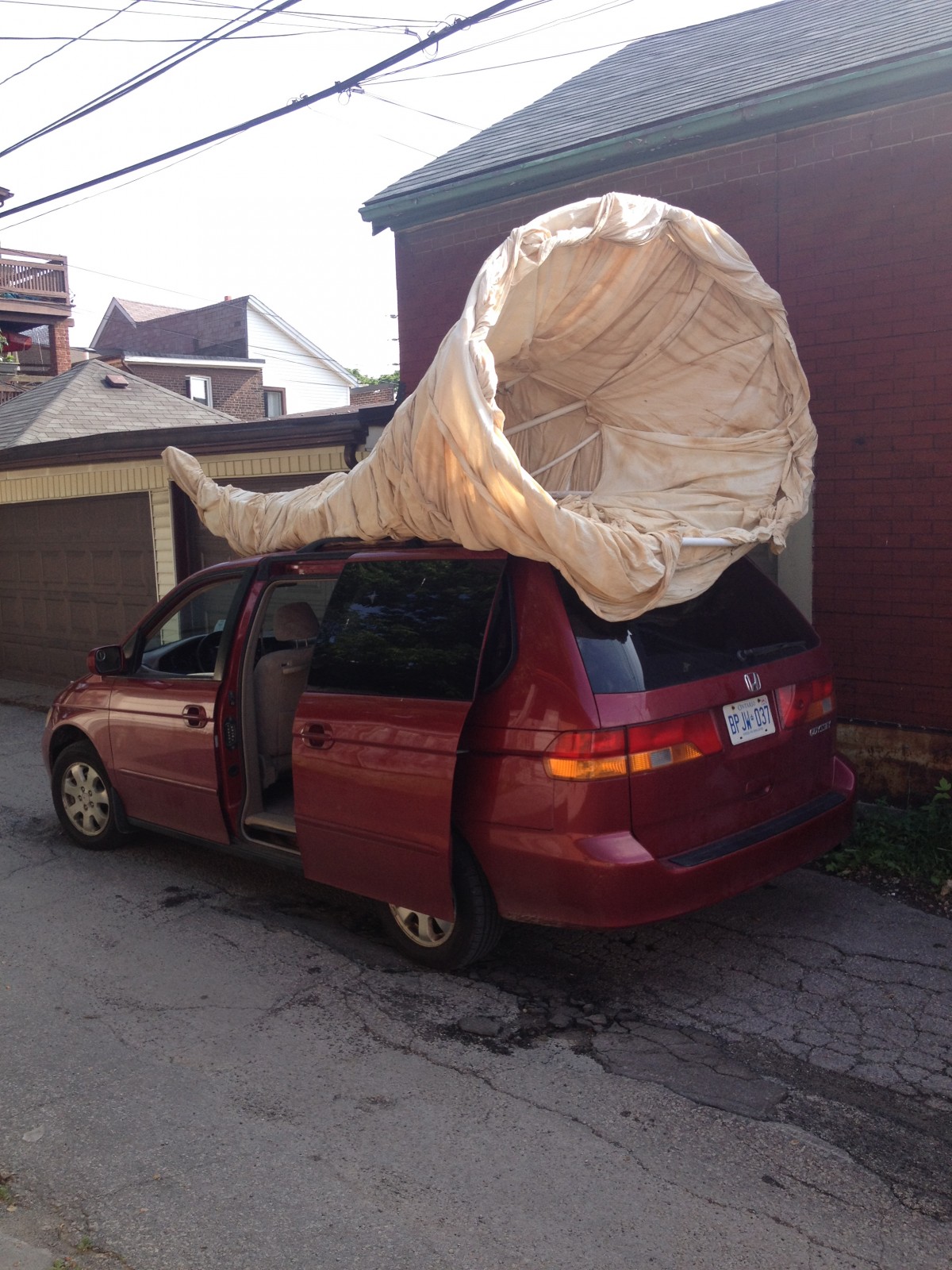
Cornucopia in transit / Photo credit co.Labs
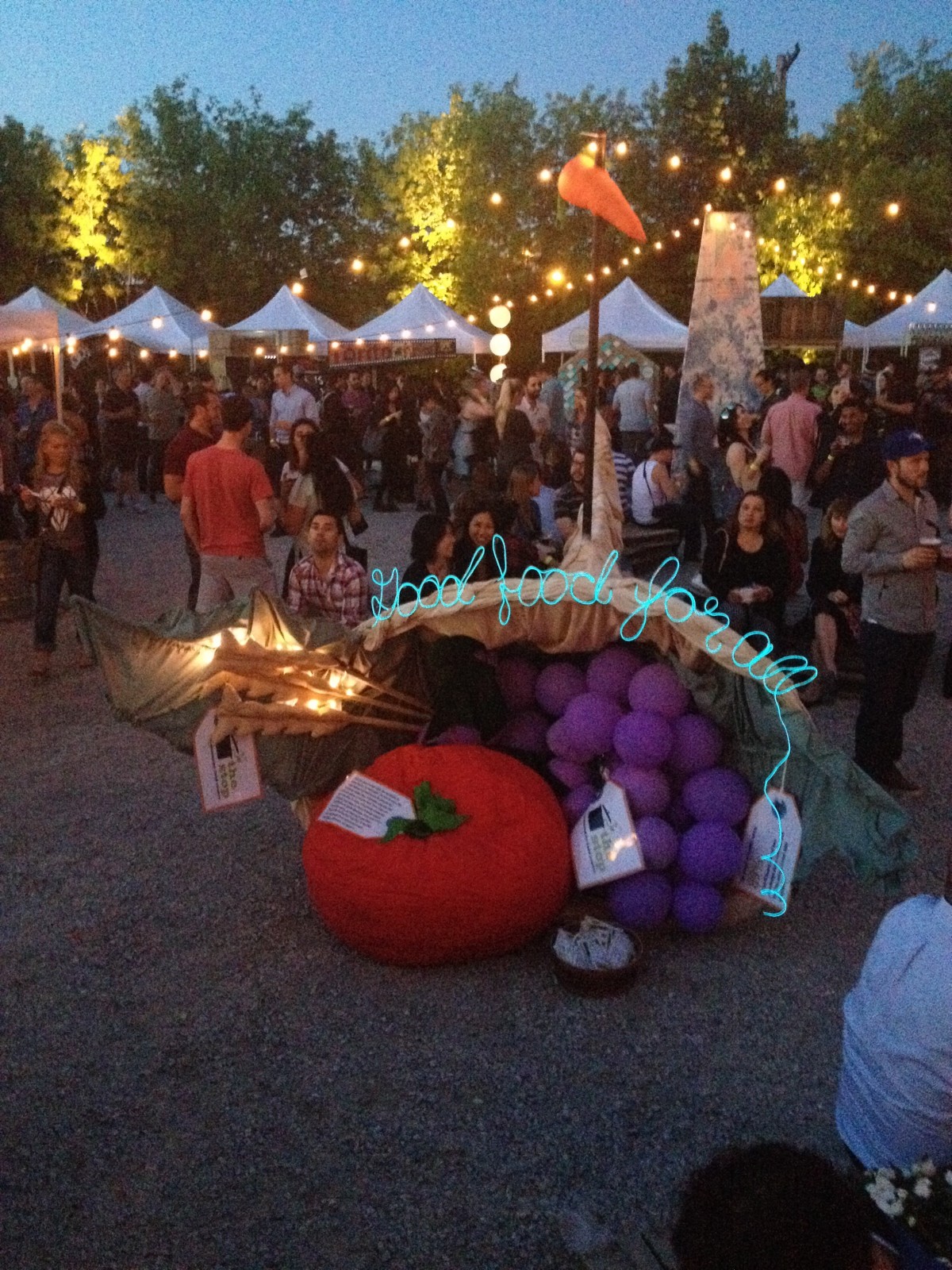
Illuminated at night / Photo credit co.Labs
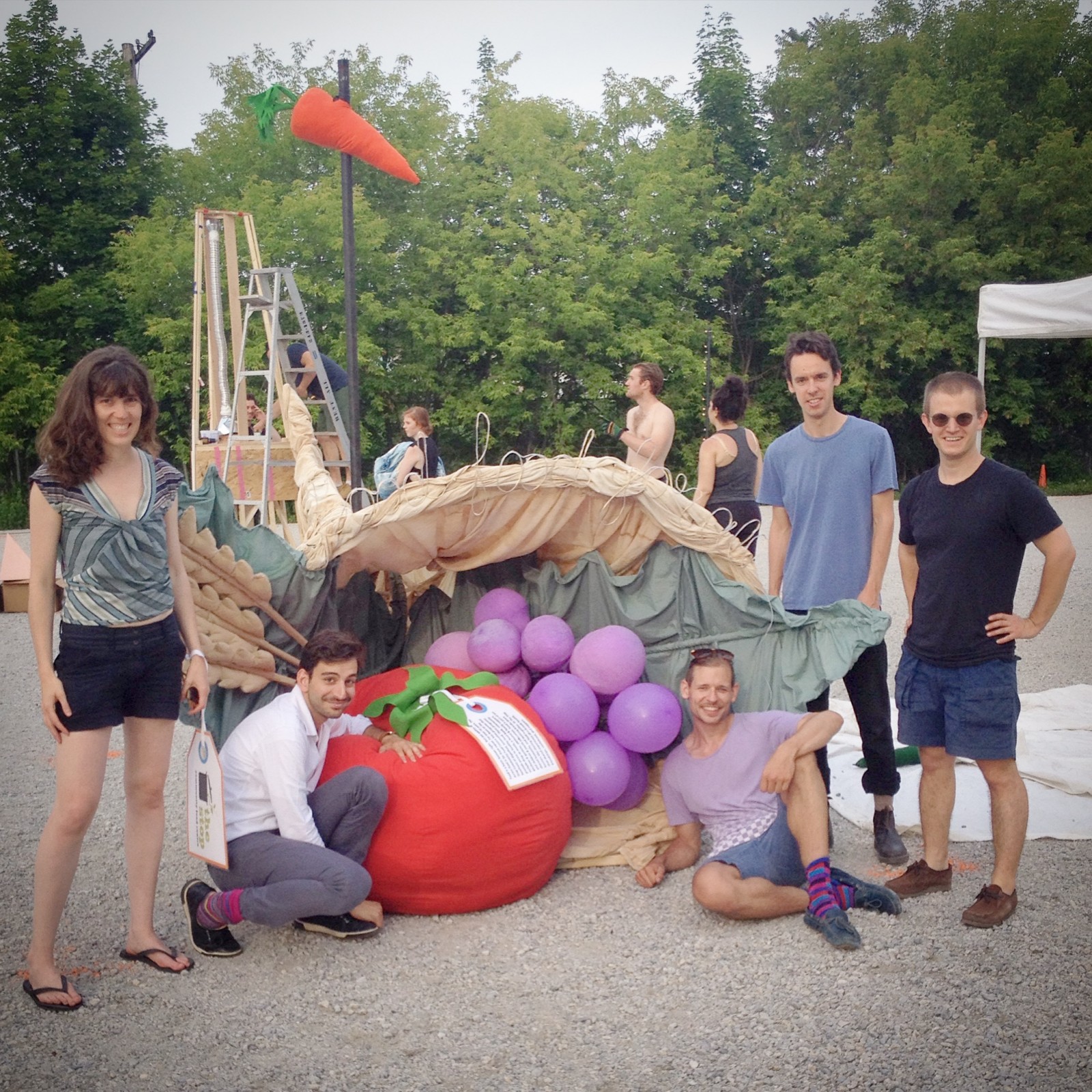
At The Stop’s Night Market / Photo credit co.Labs
BoyashiMade
Design Team:
Petra Bogias H.BAS (2012), M.Arch (2014)
Alan Kobayashi H.BAS (2008)
Design Description:
#GotMilk? food cart is the inaugural project of BoyashiMade – a design/make startup launched by UWSA graduates Petra Bogias and Alan Kobayashi.The cart is made primarily from milk crates, collected either from the streets of Toronto or local restaurants. Each is bolted together and held laterally by washers selected to fit the crate’s diagrid. A skeleton of copper pipes is threaded through this structure, forming an integrated assembly that can be easily modified or disassembled as desired. This flexibility was a key design strategy that allows us to now reinvent the cart, post-Night Market, as a furniture series. Stay tuned to their website and Instagram @boyashimade.
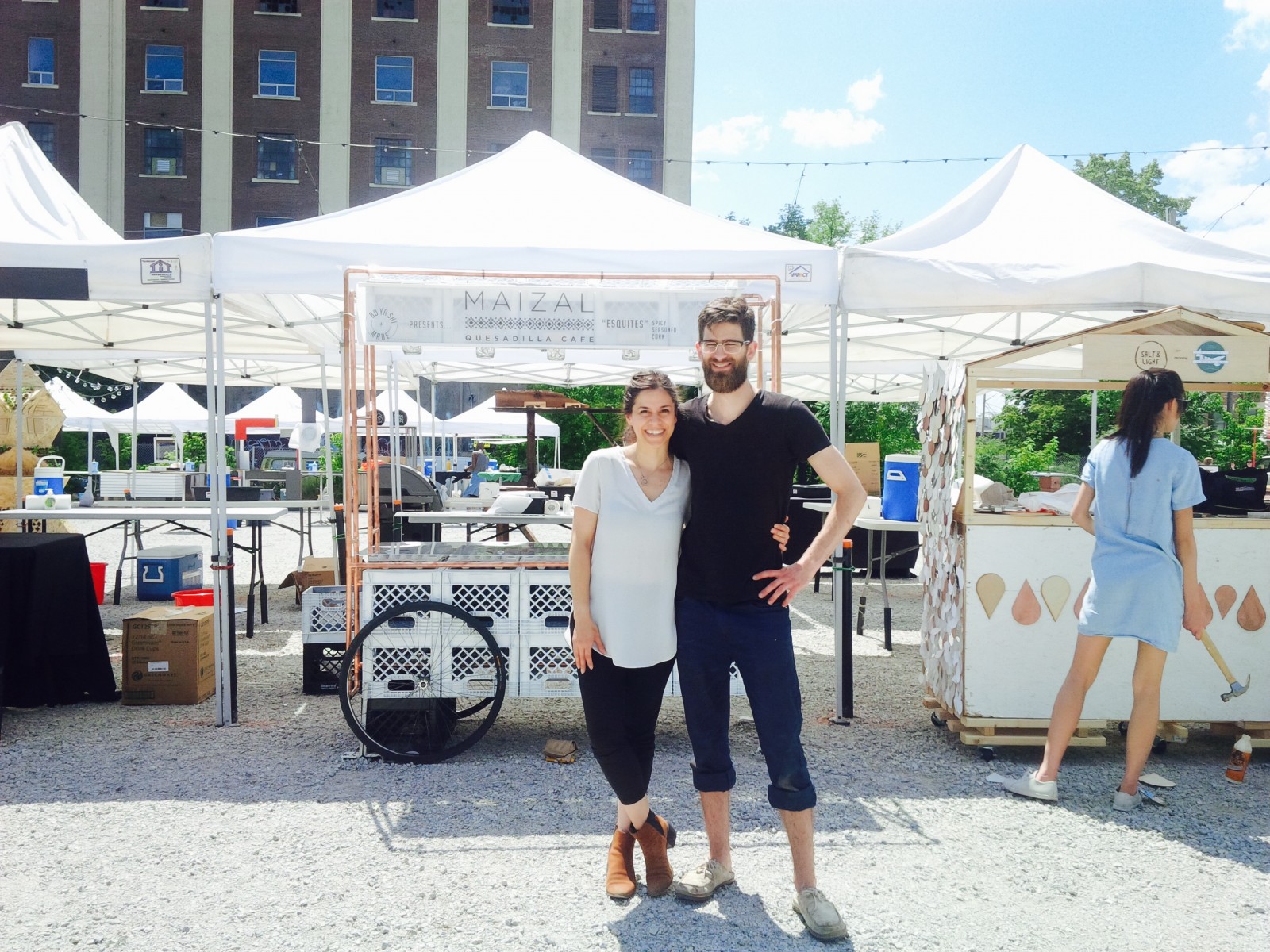
Photo credit BoyashiMade
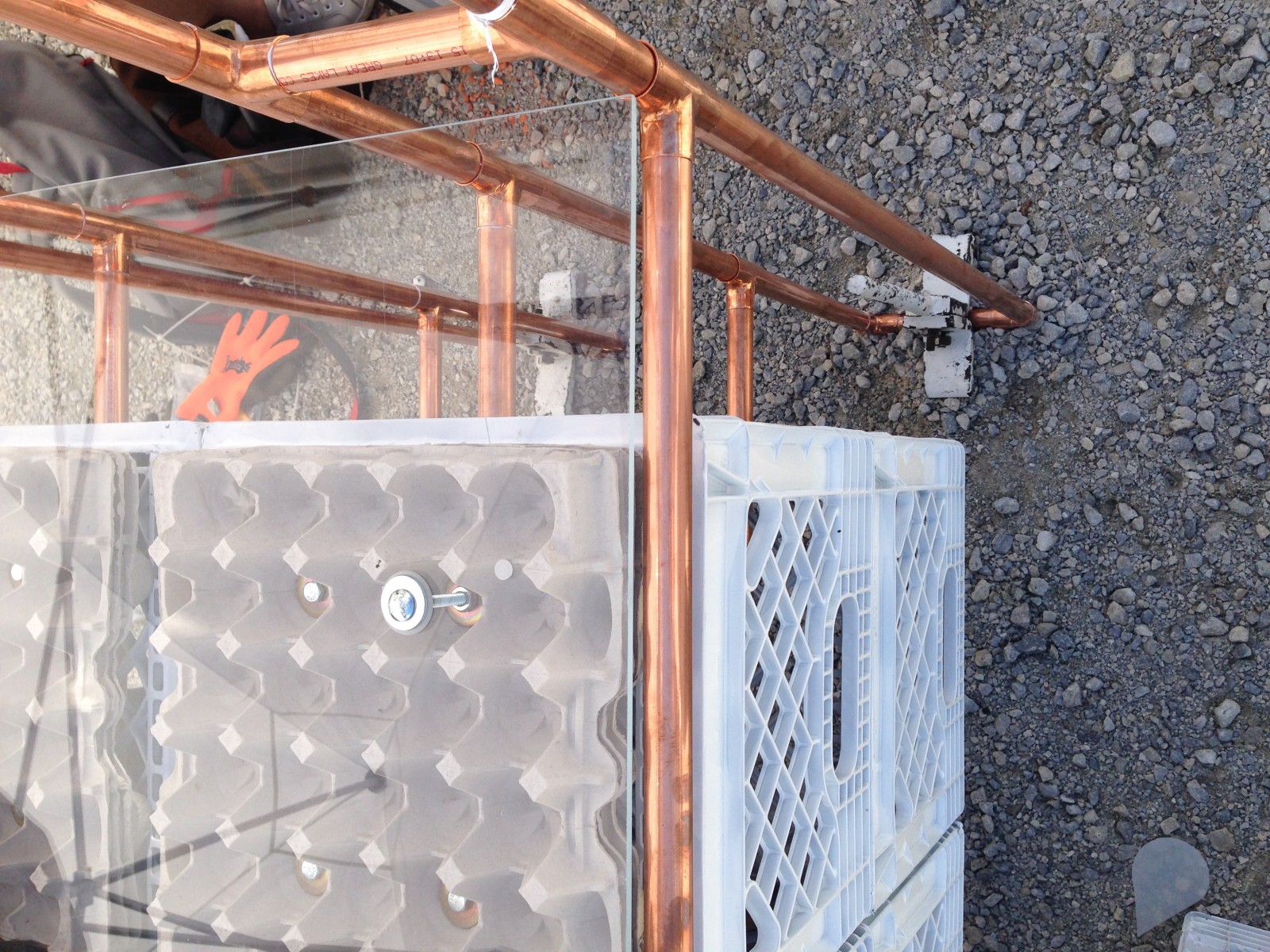
TANK
Design Team:
Judith Martin (M.Arch 2011)
Mike Taylor (M.Arch 2011)
Uros Novakovic (M.Arch 2013)
Michael Bootsma (M.Arch 2014)
Tayo Hotke
Design Description:
We developed our cart on a simple premise:
Take last year’s model
See what’s left over
Remove residue, dirt, and grime
Recoup and reuse
Make it hot
Keep crushing it forever

We had originally planned to integrate recycled water jugs into last year’s cart, using them as terrariums or musical instruments or Raspberry Pi controlled mini-speakers simulating the sounds of the Kookabura, etc. But when we were paired with two wineries, accommodating wine bottles rather than plastic water jugs was an obvious evolution.Drawing on the GC Prostho Museum Research Center by Kengo Kuma, we developed a simplified lattice detail, crossing 3/4” x 3/4” cedar strips in the x, y, and z axes with 4” spacing—just enough to accommodate a bottle of chianti or chardonnay. Offcuts from the cedar strips were used to rebuild the counter top while the old countertop slats were used to repair the signboard. In the end we were left with a shopping bag worth of scrapped wood and a hot new cart.
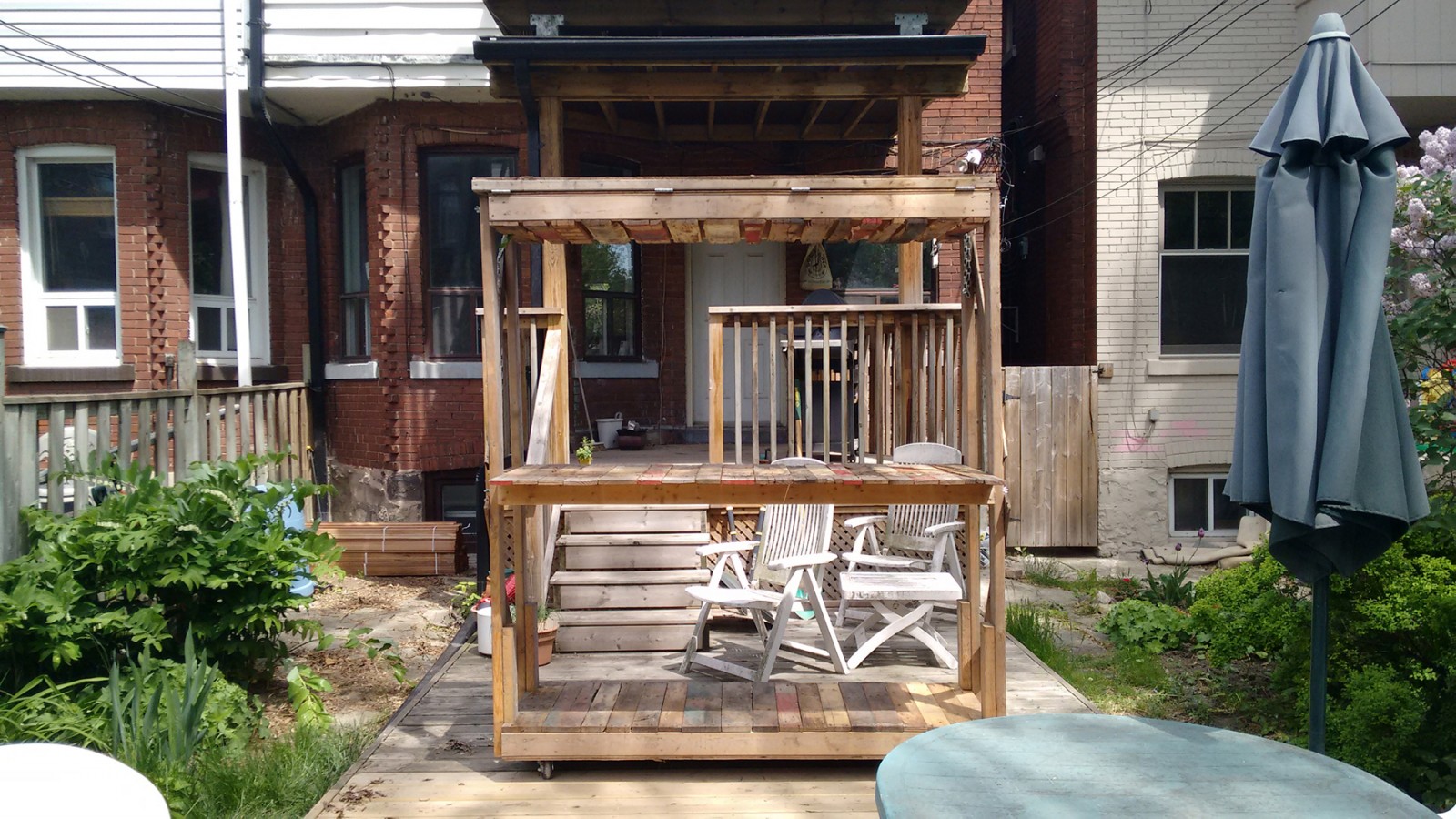
Old cart pre-construction / Photo credit TANK
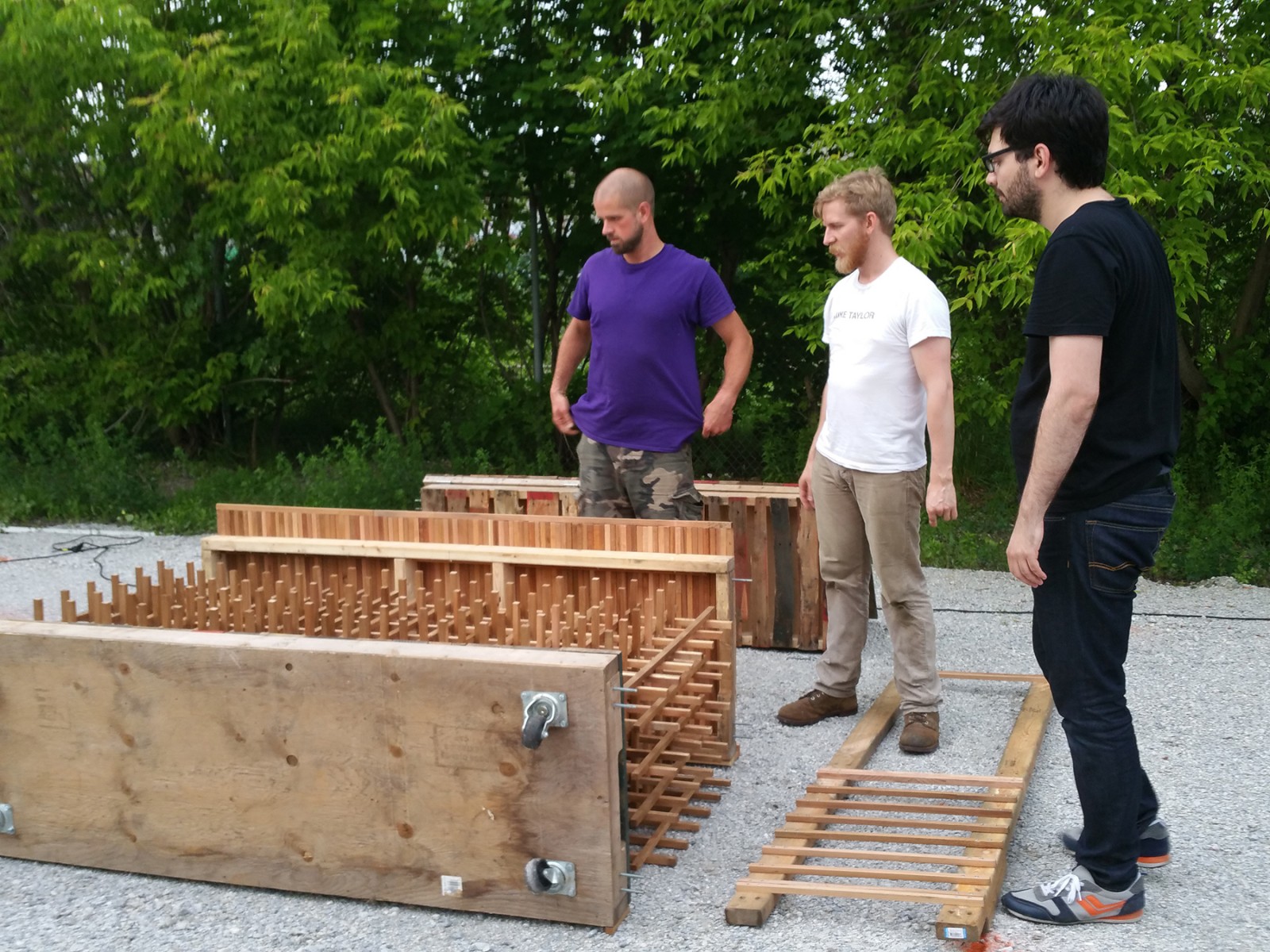
Site Installation / Photo credit TANK
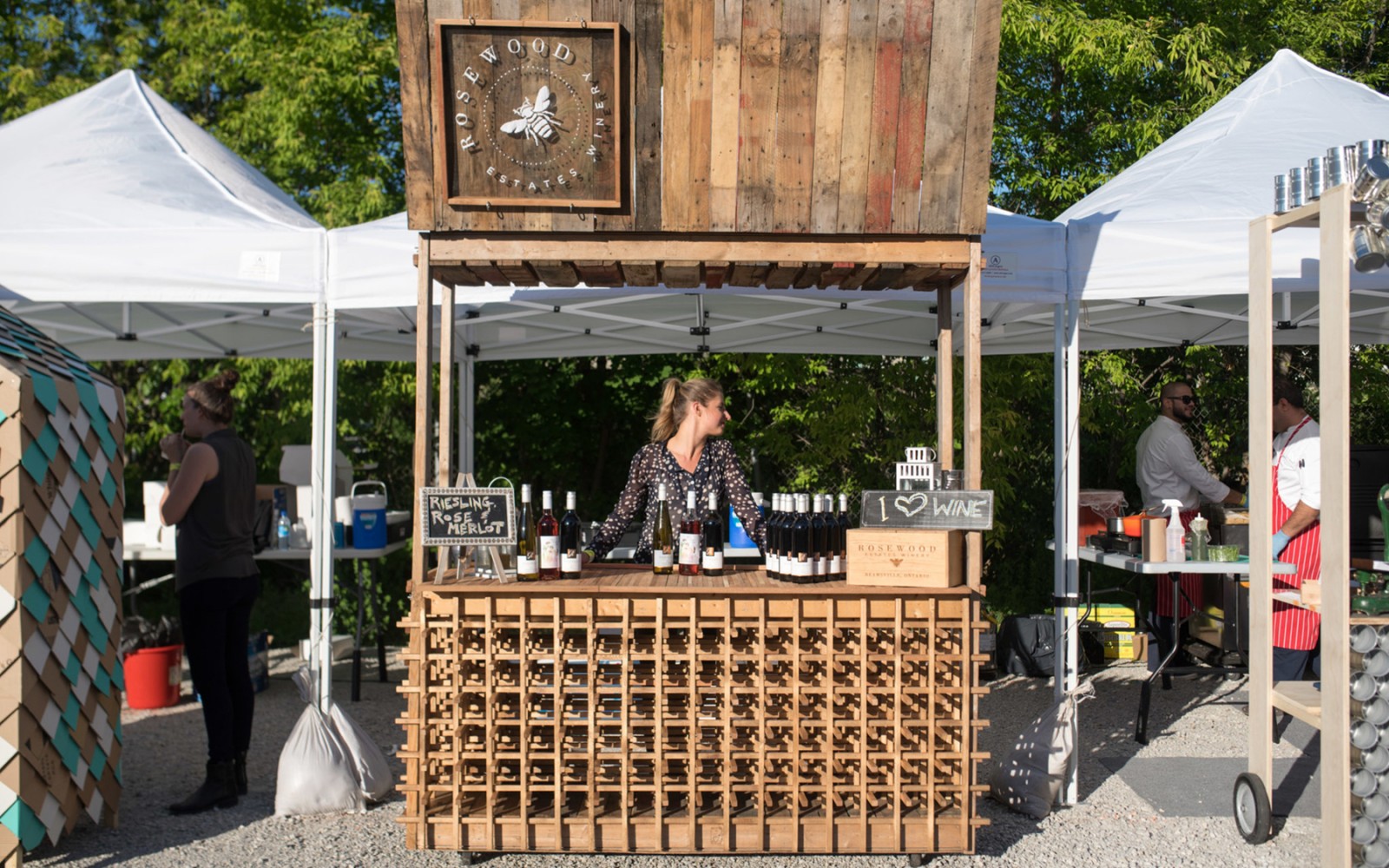
Cart at The Stop’s Night Market / Photo credit BlogTO
Design Team:
Chanel Dehond (M.Arch. 2014)
Design Description:
*Bowk* bowk* *bowkaaaahh!* THE CØØP is a light-frame timber food cart, fabricated out of 1 x 1″ pine square dowel offcuts. It is painted neon, as a nod to the colourful street markets of Bombay, the blinking lanterns of Hanoi, and the explosive aromatic spices of Iran. The signage and menu is designed alongside the matched chef’s, “Me & Mine” and “Citizen Catering,” and hung from the gabled canopy. THE CØØP’s design intent is to help raise $$$ and awareness for The Stop Community Food Centre’s critical anti-hunger and anti-poverty programs, while giving Torontonian’s a *peep*-load to talk about!
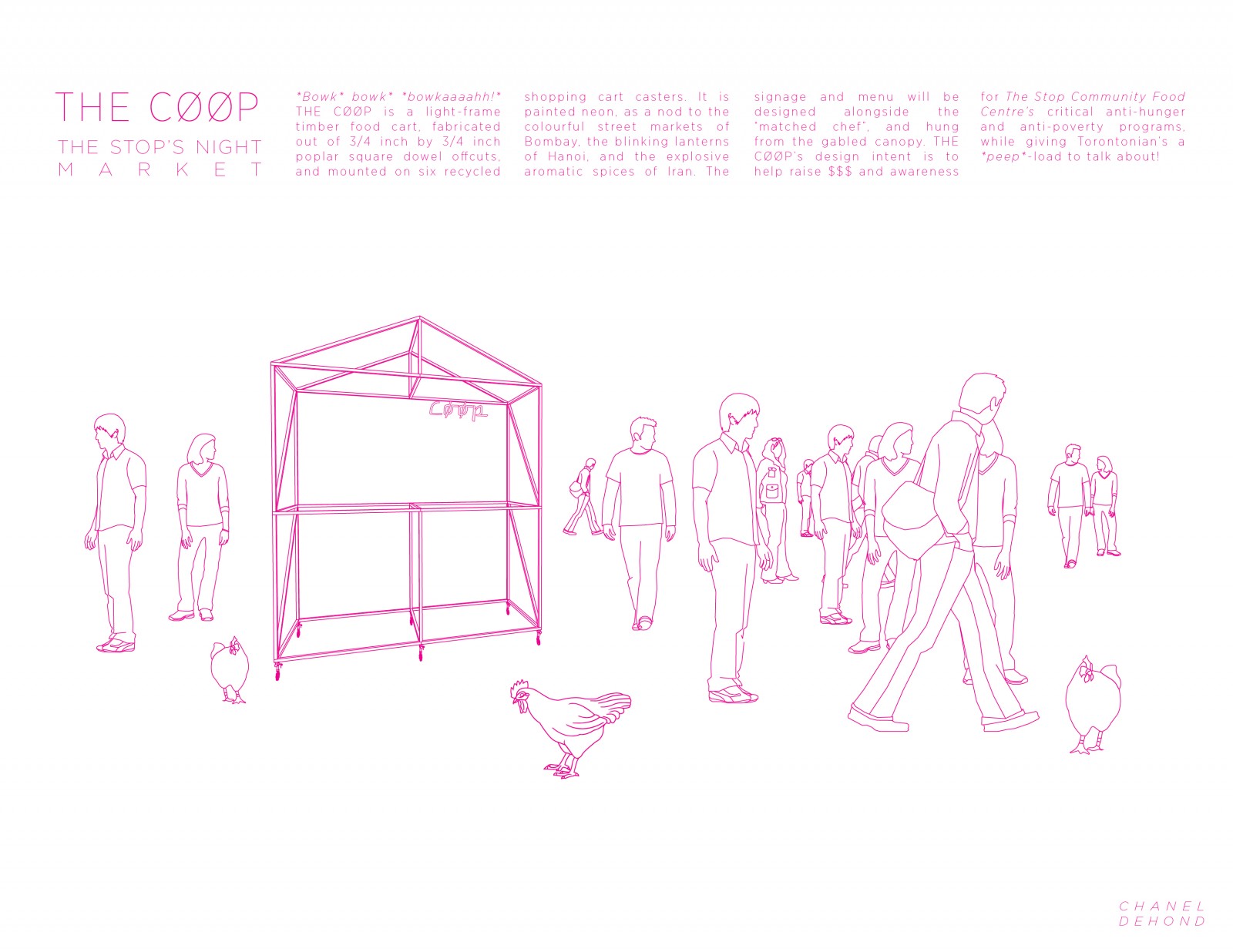
Design Proposal

Cart at The Stop’s Night Market / Photo Credit Chanel Dehond
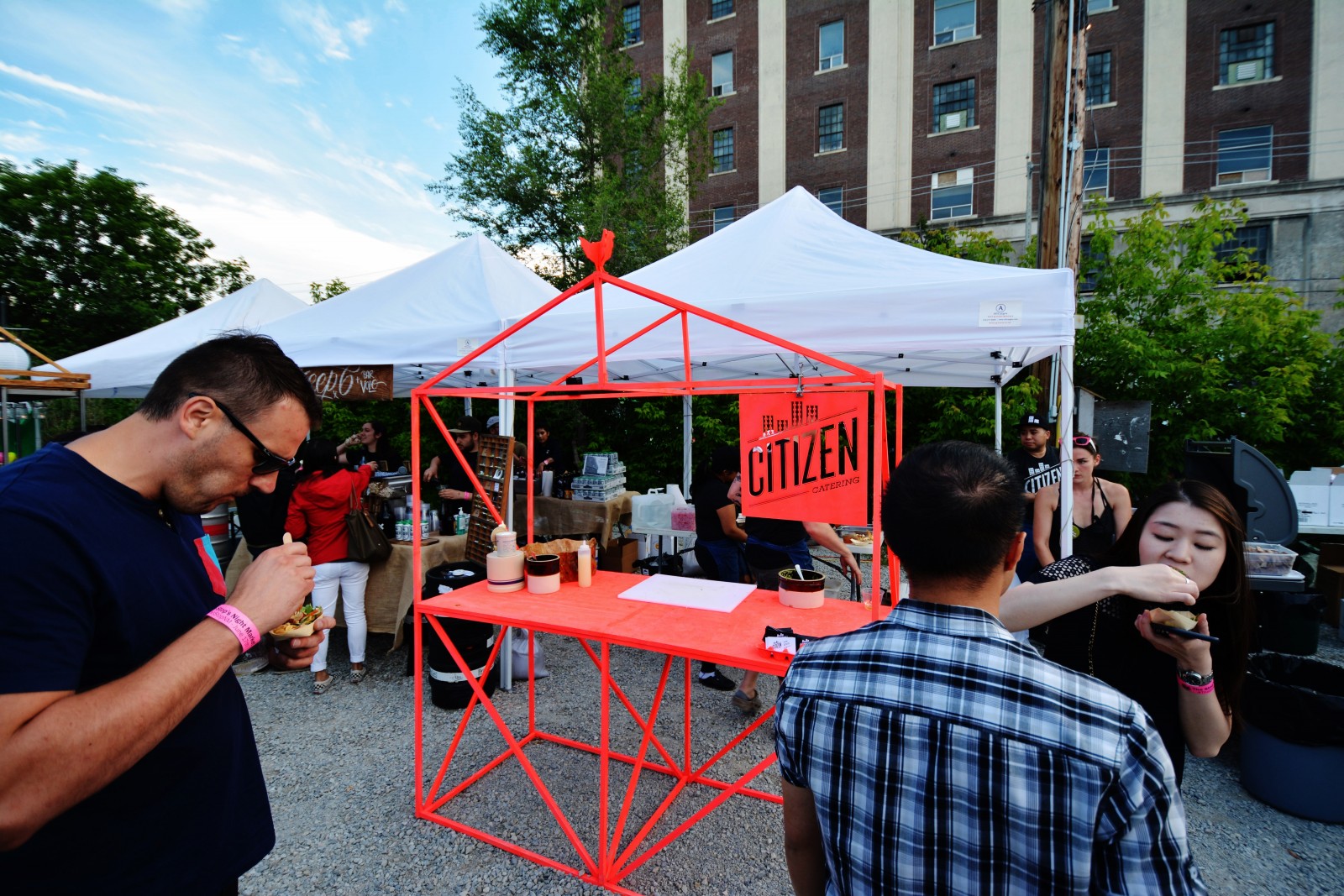
Cart at The Stop’s Night Market / Photo Credit Chanel Dehond


